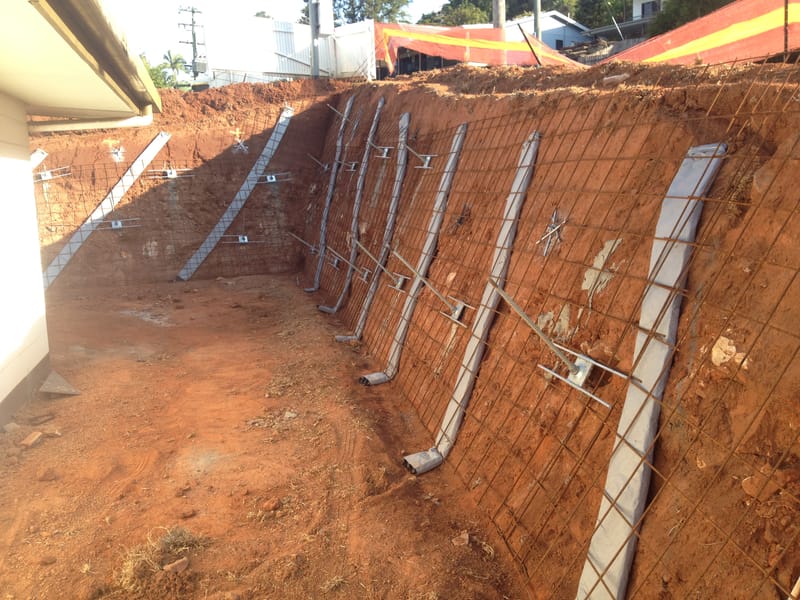Williams Anchors: Trusted Solutions for Deep Foundation and Geotechnical Requirements
Williams Anchors: Trusted Solutions for Deep Foundation and Geotechnical Requirements
Blog Article
Reliable Rock Anchors for Secure and Steady Foundations
In the world of civil design, the role of trustworthy rock supports can not be overstated, as they are crucial in developing protected and stable structures across a selection of applications. These supports not just assist in load transfer from frameworks to bedrock however additionally supply vital resistance against all-natural forces, consisting of wind and seismic task. Recognizing the different kinds of rock supports, their particular applications, and the details of setup and maintenance is essential for optimizing their efficiency. What elements should be considered when choosing one of the most proper securing service for an offered project?
Kinds Of Rock Anchors

Passive anchors depend on the weight of the framework and the bordering dirt or rock to give resistance. Active supports, on the various other hand, entail the application of stress via a high-strength cable or rod, creating a pre-stressed condition in the anchor - Williams Anchors.
Grouted anchors are an additional significant category, wherein a steel bar or cable television is placed into a drilled hole, complied with by a cementitious grout. When healed, the cement bonds with the bordering rock, developing a durable anchoring system. Each kind of rock support supplies distinctive benefits based upon the certain geological conditions and structural requirements, thereby playing an essential role in the overall integrity and longevity of created centers.
Applications in Building And Construction
Rock anchors play a crucial function in different construction applications, giving necessary support and stability in varied environments. These innovative services are utilized in jobs varying from massive framework developments to smaller sized property frameworks. Among the key applications of rock anchors remains in the stablizing of inclines and maintaining walls, where they assist stop dirt disintegration and preserve structural stability.
In addition, rock supports contribute in securing foundations for bridges, passages, and high-rise buildings, guaranteeing they can hold up against lateral forces such as wind and seismic activity. Their flexibility permits for setup in difficult geological conditions, making them ideal for projects in hilly or rocky terrains.

Key Option Requirements
Picking the ideal rock support for a certain application needs careful factor to consider of numerous vital standards. Primarily, the geological conditions of the site have to be thoroughly examined. Understanding rock type, stamina, and stability is necessary to ensure that the support will do successfully under tons problems.

An additional crucial factor is the deterioration resistance of the anchor materials. In atmospheres exposed to moisture or chemicals, making use of corrosion-resistant products will lengthen the life-span of the anchors and keep architectural integrity over time.
Additionally, the support's installation approach need to align with the project's requirements and constraints. Alleviate of installation, along with the potential effect on surrounding frameworks, must be considered.
Installation Strategies
Effective setup methods are essential for the successful performance of rock anchors. Correct setup makes sure that the anchors accomplish the preferred load-bearing capacity and stability within the geological problems. The initial step in the installment process includes website assessment, where geological surveys determine the rock kind, condition, and any kind of possible challenges.
When the site is reviewed, the proper drilling approach must be chosen-- alternatives include rotary drilling, diamond exploration, or percussion boring. The choice depends on rock hardness and ecological factors to consider. Accurate boring depth and angle are important to make sure that the supports line up with architectural demands and tons distribution.
After exploration, the next stage involves cleansing the borehole to remove debris, which can jeopardize bond toughness. Following this, the support is put, and if needed, a grout or resin is infused to improve adhesion. The visite site healing time of these materials have to be followed, ensuring that the anchors attain complete strength before any load is used.
Maintenance and Examination
Proper maintenance and evaluation of rock anchors are vital to ensure their long-term performance and reliability (Williams Anchors). Regular analyses assist recognize any kind of prospective problems, such as rust, displacement, or structural fatigue that can jeopardize the stability of the anchoring system
Regular inspections need to be conducted at defined intervals, taking into consideration environmental variables and the specific application of the rock supports. Visual inspections ought to concentrate on this page the subjected sections of the supports, looking for indications of corrosion, splits, or various other abnormalities. In addition, it is important to evaluate the bordering geological conditions to detect any kind of changes in dirt or rock that may affect support efficiency.
In some instances, advanced techniques such as tons screening or non-destructive screening may be warranted to establish the anchors' load-bearing capacity and overall health. Proper paperwork of examination findings, maintenance tasks, and any fixings or replacements performed is vital for recurring examination and conformity with sector requirements.
Verdict
Finally, reputable rock anchors play a crucial function in guaranteeing safe and steady structures across different building applications. By efficiently moving lots and improving security versus lateral forces, these anchors add considerably to the durability and stability of frameworks such as bridges, passages, and retaining wall surfaces. Strategic choice, setup, and maintenance of rock anchors are important for optimizing performance and guarding public safety, inevitably underscoring their relevance in contemporary engineering practices.
Report this page